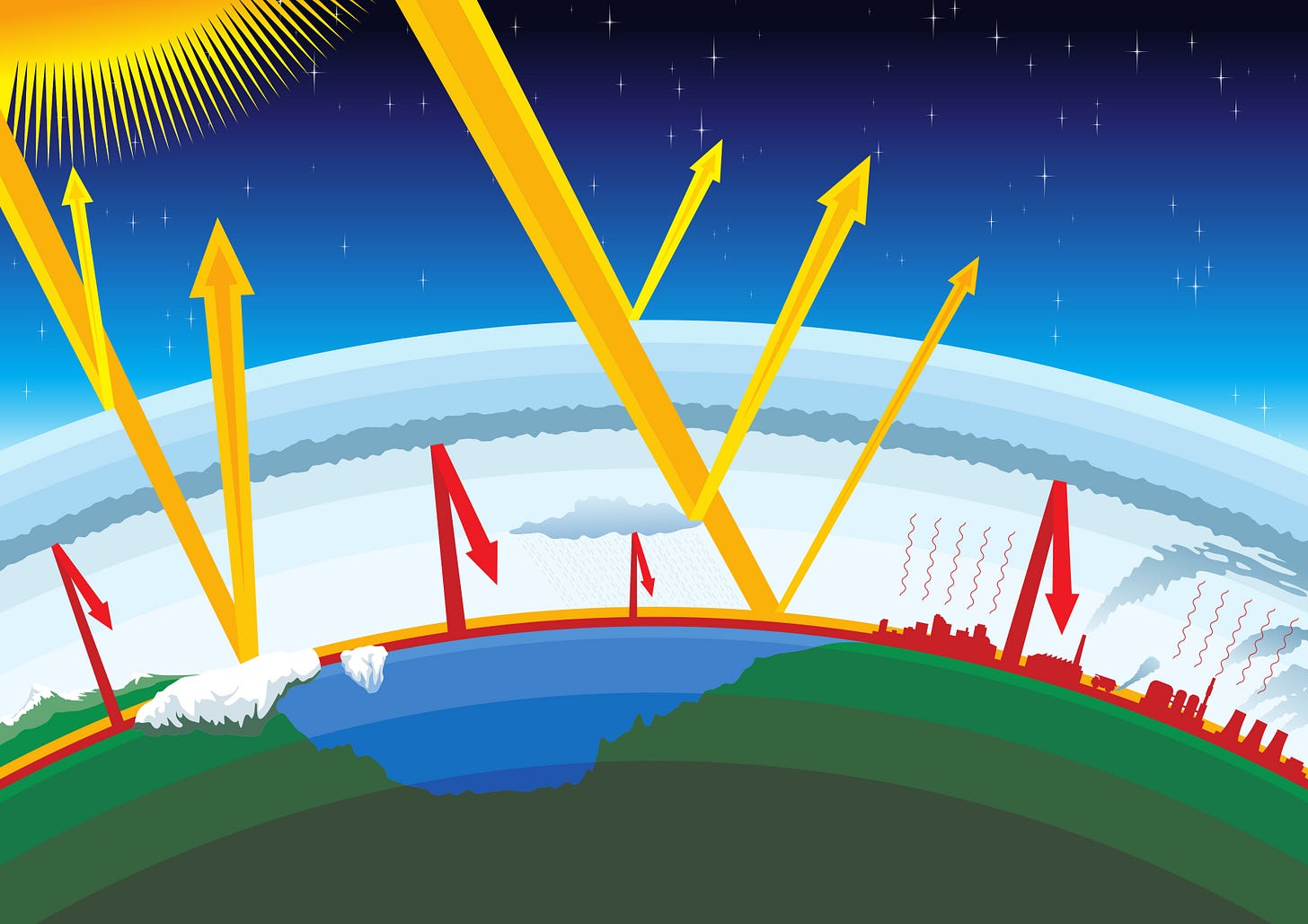4°C
Two announcements this week highlighted different world views. Both, in their own way, treat climate change as a religion.
A Dagger to the Heart
The first announcement was from the United States Environmental Protection Agency (EPA).
EPA Launches Biggest Deregulatory Action in U.S. History
The administrator, Lee Zeldin, said, ‘the agency will undertake 31 historic actions in the greatest and most consequential day of deregulation in U.S. history’. The language he used was revealing.
We are driving a dagger straight into the heart of the climate change religion
France Prepares for 4°C
The second announcement was from the government of France.
France is preparing for a future where global heating has risen to 4C above pre-industrial levels, sparking more wildfires and eroding its coastlines.
This plan has a religious flavor. It is an act of faith. It is doubtful that the nation of France will even exist if and when we 4°C.
In his book Our Final Warning, Mark Lynas says the following about a 4°C world.
Humans as a species are not facing extinction ― not yet anyway. But advanced industrial civilization, with its constantly increasing level of material consumption, energy use and living standards ― the system that we call modernity and that has brought us into this crisis by continuing to be utterly dependent on fossil fuels ― this civilization is tottering.
In other words, at 4°C the world will be unrecognizable. Well before we reach that temperature there will be starvation, particularly in Africa. So, the French can expect to see enormous waves of refugees. At the same time the French economy will be going through wrenching changes.
Timing of 4°C
We crossed the highly publicized 1.5°C threshold last year, and the rate at which temperatures are rising is accelerating. Projections from the IPCC (Intergovernmental Panel on Climate Change) suggest that we could reach the 4°C threshold somewhere between the years 2080 and 2100. However, the IPCC has historically underestimated the rate of global warming because it did not properly consider feedback effects, such as melting permafrost, reduced Arctic albedo, and loss of the Amazon rain forest.
A 4°C World
Here is how ChatGPT described the world at 4°C.
A 4°C world is not just hotter—it’s a fundamentally different planet. Some regions might still be habitable, but societies, economies, and ecosystems would struggle to adapt. This level of warming is often described as catastrophic.
Extreme Heatwaves & Uninhabitable Regions
Many areas, particularly in the Middle East, South Asia, and parts of Africa, would experience lethal heatwaves exceeding human survivability for extended periods.
Heat stress could make outdoor work impossible in tropical and subtropical regions.
Rising Sea Levels & Coastal Cities Underwater
Sea levels could rise by 1-2 meters by 2100, and even more in the following centuries.
Major coastal cities like Miami, New York, London, Shanghai, and Mumbai would face massive flooding or be submerged entirely.
Low-lying island nations such as the Maldives and Tuvalu could become uninhabitable.
Collapse of Food & Water Security
Crop yields (wheat, rice, corn) would decline sharply due to heat and drought, threatening global food supply.
More frequent and severe droughts would cause water shortages in places like California, the Mediterranean, and the Middle East.
Ocean acidification and warming would lead to the collapse of fisheries, endangering billions who rely on seafood.
Ecosystem Collapse & Mass Extinctions
Coral reefs (like the Great Barrier Reef) would almost completely disappear.
The Amazon rainforest could turn into dry savanna, releasing huge amounts of carbon and worsening climate change.
Many species would face extinction due to habitat loss, heat stress, and changing ecosystems.
More Intense & Frequent Natural Disasters
Hurricanes, typhoons, and cyclones would become stronger, with massive storm surges.
Wildfires would rage uncontrollably across regions like California, Australia, and Southern Europe.
Floods, landslides, and extreme weather events would increase, displacing millions.
Human Migration & Global Instability
Climate refugees could number in the hundreds of millions, leading to humanitarian crises and geopolitical tensions.
Nations may compete for dwindling resources, increasing the risk of wars over water, food, and habitable land.
Economic collapses could occur in nations dependent on agriculture, tourism, or coastal industries.
Breakdown of Infrastructure & Health Systems
Heat stress would cause power grids to fail more frequently due to increased demand for air conditioning.
Waterborne and vector-borne diseases (malaria, cholera, dengue) would spread as warmer temperatures expand their range.
Extreme heat would kill millions each year directly and indirectly through malnutrition, disease, and heat exhaustion.
Tipping Points & Irreversible Changes
Melting of Greenland and Antarctic ice sheets could lock in many meters of sea level rise.
Permafrost thawing would release vast amounts of methane, a potent greenhouse gas, accelerating warming further.
Ocean currents like the Atlantic Meridional Overturning Circulation (AMOC) could collapse, drastically altering weather patterns.




